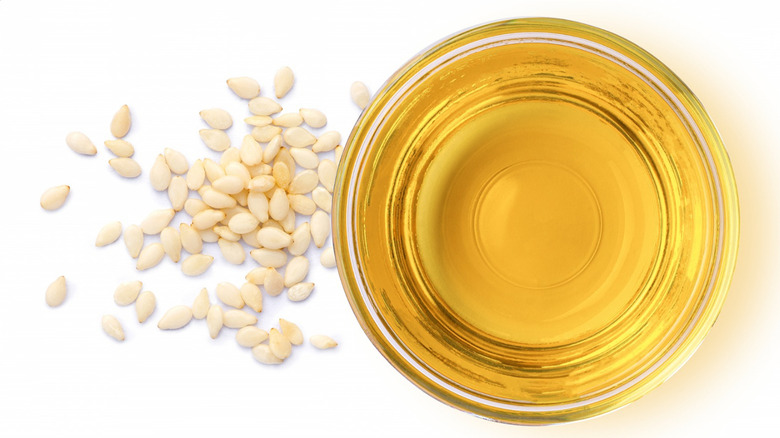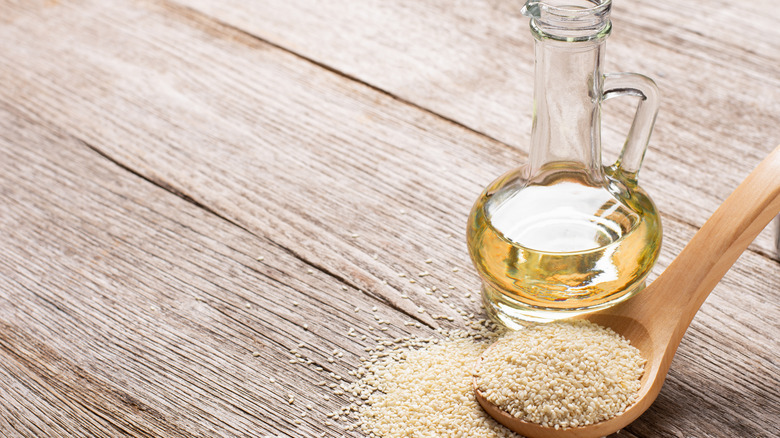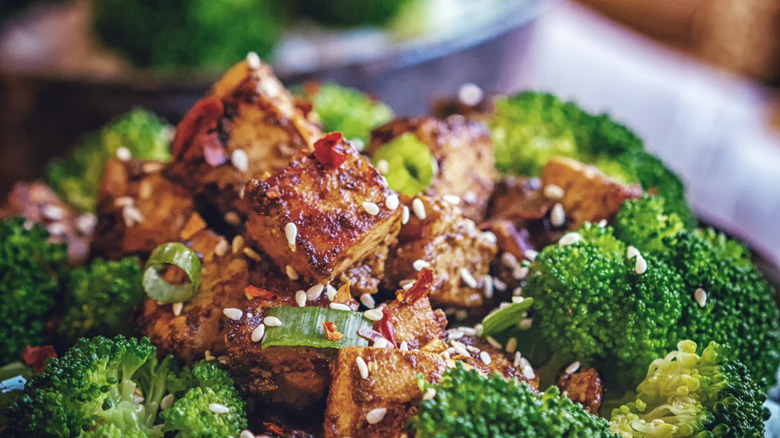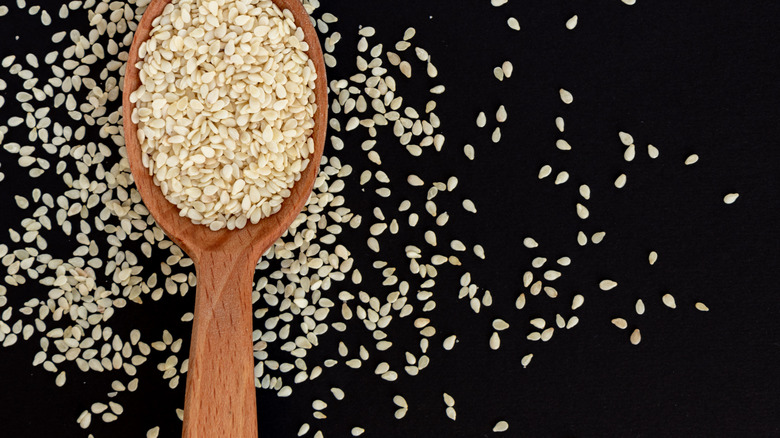Sesame Oil Is More Versatile Than You Might Think
Sesame oil isn't just for stir-fries and salads. The untapped potential of this simple pantry staple can add some variety and excitement to your culinary life.
Sesame oil is made from sesame seeds and originated in India. For centuries, this oil has been a staple in various global cuisines due to its unique flavor profile and versatility in the kitchen. It's commonly used in cooking for its distinctive flavor and high smoke point of 410 degrees Fahrenheit, which makes it suitable for high-temperature cooking, like searing salmon.
There are two primary types of sesame oil: light and dark. Light sesame oil is made from raw sesame seeds and has a mild, nutty taste. It's often used as a salad dressing base and for stir-frying and sautéing. Dark sesame oil, on the other hand, is produced from toasted sesame seeds; this gives it a more intense and robust taste. The staple is used in countless dishes all across the Asian continent and gives other flavors richness and depth.
Sesame oil is often described as rich and toasty, and its flavor remains pronounced when it's used as a seasoning or finishing oil, like in classic vegetable lo mein or other noodle dishes. Compared to other oils with similar ingredients, sesame oil stands alone: Peanut oil has a much more neutral taste, olive oil is distinctive for its fruity and grassy notes, and sunflower oil lacks sesame's robust flavor qualities.
How it's made
Sesame oil is typically made through a series of steps. First, sesame seeds are harvested and cleaned to remove any impurities. If dark sesame oil is desired, the seeds are roasted to enhance the oil's flavor and aroma. Then, the cleaned (and sometimes roasted) sesame seeds are pressed to extract the oil. There are two common methods for pressing: cold pressing, which is done at low temperatures to preserve flavor and nutrients (though this may yield less oil), and hot pressing, which is done at higher temperatures and may yield more oil, though this can slightly affect flavor and nutrition.
The extracted oil is filtered to remove impurities and to allow it to settle so any remaining sediments are separated. It can then be stored. Some commercial processes include additional steps, mainly for refined sesame oil production. The chosen method influences the final oil's flavor, color, and nutritional content, as well as whether the oil is light or dark.
How to use it in cooking
Cooking with sesame oil is always a flavorful experience, whether you're frying with it or adding it as a finishing touch. You can also incorporate it into marinades for meats and vegetables, or use it as a key ingredient in salad dressings, where its unique taste pairs well with other flavors like soy sauce, ginger, and garlic.
Sesame oil is enjoyable both raw and cooked. When used raw, such as in salad dressings, its flavor is more pronounced, adding a delightful nuttiness. Conversely, when heated, the flavor becomes more subdued, enhancing the dish without overwhelming other tastes.
Important to note, however, is that toasted sesame oil has a lower smoke point compared to refined sesame oil, and as such, it's best suited for medium to medium-high heat; otherwise, it may turn bitter. Mixing it with neutral oils can help raise its smoke point. Store your sesame oil in a cool, dark place to preserve its flavor and prevent it from going rancid, or refrigerate it for extended freshness.
Nutritional information for sesame oil
A 1-tablespoon serving of sesame oil (about 14 grams) is approximately 120 calories, which is similar to most other cooking oils. It contains about 14 grams of fat per serving, all of which are from healthy, unsaturated fats. Sesame oil has a small amount of saturated fat, usually around 2 grams per serving, and is also a good source of omega-6 fatty acids, particularly linoleic acid. Sesame oil is naturally cholesterol-free and also contains small amounts of vitamin K.
Keep in mind that the exact nutritional content may vary slightly depending on the brand and type of sesame oil you buy. While sesame oil is calorie-dense due to its fat content, it provides healthy monounsaturated and polyunsaturated fats, making it a suitable choice for cooking in moderation.
You can likely find sesame oil at either Asian food markets or large stores with robust cooking sections, like Walmart. In general, it's good practice to consume oils in moderation as part of a balanced diet, as they are calorie-dense. Sesame oil can add a rich flavor and depth to your dishes, but it's best used as a complement to a well-rounded diet rather than a primary source of nutrition.



